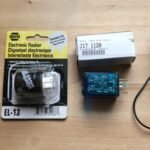The lighting system in a 1980 Suzuki GS750 motorcycle is an essential part of its electrical setup, ensuring visibility and safety on the road. Understanding the lighting schematic diagram for a 1980 GS750 Suzuki spec can be crucial for both maintenance and troubleshooting, especially for vintage bike enthusiasts and DIY mechanics.
Understanding the Lighting Schematic
1. Components in the Lighting System
The lighting schematic of the Suzuki GS750 includes several key components:
- Headlight and Taillight: Powered by the battery, controlled through switches and relays.
- Indicator Lights: Connected to the handlebar switch assembly, managing turn signals.
- Fuses and Relays: Essential for protecting the electrical system from surges.
- Ground Connections: Critical for completing the circuit and preventing electrical faults.
2. Reading the Schematic
A typical lighting schematic for the 1980 GS750 uses color-coded wires, with each color representing a specific function (e.g., yellow for the headlight, green for ground). By understanding these colors, you can trace electrical paths, identify possible faults, and ensure all connections are intact.
Common Issues and Troubleshooting
- Dim Headlights: Often caused by faulty ground connections or aged wiring. Check the ground points and clean any corroded connections.
- Non-Working Indicators: Could be due to a blown fuse or a malfunctioning relay. Refer to the schematic to locate the affected components.
- Flickering Lights: Usually related to loose connections or an issue with the voltage regulator.
FAQ
- Where can I find a lighting schematic diagram for a 1980 Suzuki GS750?
- Resources like the BikeCliff website offer wiring diagrams, including lighting schematics for the GS750.
- What are common issues with the GS750’s lighting system?
- Problems often include dim headlights, faulty indicators, and flickering lights due to wiring issues.
- Why is the color coding important in the schematic?
- The color codes help identify specific wires for functions like headlights and indicators, simplifying troubleshooting.
- How can I maintain the electrical components?
- Regularly inspect connections, clean ground points, and replace worn-out fuses to ensure proper functioning.
- Can I upgrade the lighting system?
- Yes, modern LED lights can be installed, but ensure compatibility with the original wiring to avoid electrical conflicts.










